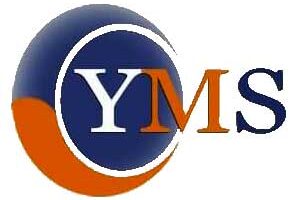Jenkins Pipeline is another characteristic that enhances the choices of Jenkins, as it lets you implement a Pipeline as Code using Domain Specific Language (DSL). Though there are other CI/CD tools available in the market, Jenkins thrives on its group and highly effective set of options (particularly Jenkins Pipeline) that gives quicker feedback by way of CI instruments. Jenkinsfile can be committed to the source control repository of the project. With Jenkinsfile, the CD Pipeline is also treated as part of the application that’s versioned, dedicated, and reviewed like another piece of code. Jenkins is designed in such a fashion that makes it comparatively simple to distribute work throughout a quantity of machines and platforms for the accelerated construct, testing, and deployment.
- In 2011, Oracle who owned Sun Microsystems had a dispute with Hudson open supply group, so that they forked Hudson and renamed it as Jenkins.
- The Google Play Publisher plugin lets you send builds to an alpha channel in Google Play for release or additional testing on actual devices.
- But that meant testing one’s modifications in isolation, without everybody else’s daily commits.
- Once put in, Jenkins permits you to either accept the default plugin list or choose your personal plugins.
- You can take assist from the Jenkins group, whether it’s for extensibility, assist, documentation, or any other feature related to Jenkins.
(developer documentation). Welcome to the Jenkins user documentation – for folks wanting to make use of Jenkins’s current performance and plugin options. We respect your effort to stay glued to this prolonged ‘what is Jenkins’ weblog and reaching this far! Jenkins is an excellent CI/CD device that has wonderful functionalities and the most effective part is that it’s free to make use of. Based on what we mentioned in this what is Jenkins blog, we can conclude that Jenkins has features that boost release agility by providing CI companies.
What Is Jenkins Used For?
Hudson was created in the summertime of 2004 and the first release was in February 2005. We thank the following organizations for their support of the Jenkins project through free and/or open supply licensing programs. Code commit built, and test cycle was very infrequent, and a single construct was accomplished after many days.

In 2004, Kohsuke Kawaguchi was a Java developer at Sun Microsystems. Kawaguchi was bored with breaking builds in his development work and needed to discover a method to know, earlier than committing code to the repository, whether or not the code was going to work. So Kawaguchi constructed an automation server in and for Java to make that possible, referred to as Hudson. Hudson became well-liked at Sun, and spread to different corporations as open source. Jenkins is the main pipeline automation server for growth and is an integral CI/CD tool.
What Are Jenkins Pipelines?
The Stage block is used by many plugins for providing the visualization of Jenkins standing (and progress). Every job within the Jenkins pipeline has some dependency on a number of occasions. Continuous delivery pipeline in Jenkins consists of 4 states – Build, Deploy, Test, and Release.

You will be in a position to release software more frequently and with fewer problems if you do this. Jenkins pipelines are a versatile and powerful way to define and automate software program delivery processes. They permit for the creation of steady integration and steady supply (CI/CD) pipelines, enabling teams to efficiently construct, check, and deploy applications. Jenkins is essential in DevOps due to its capability to automate varied stages of software program improvement, deployment, and supply. Jenkins is very customizable & scalable, making it a versatile software that supports varied use cases and simplifies the software growth process. You can even get skilled in server automation, steady integration, continuous deployment, build pipelines, and more.
Learn Tutorials
After Oracle acquired Sun, the project was forked to stay open supply and the fork was named Jenkins in 2011. The declarative pipeline can specific most of what you have to outline pipelines, and is much easier to be taught than the scripted pipeline syntax, which is a Groovy-based DSL. The scripted pipeline is in fact a full-blown programming setting. In March 2019 the Linux Foundation, along with CloudBees, Google, and a selection of other corporations, launched a model new open supply software basis known as the Continuous Delivery Foundation (CDF).
Jenkins, a well-liked automation server, provides key options for environment friendly software program development. It offers steady integration and delivery, extensibility through plugins, easy configuration via a web interface, distributed build support, and robust error handling https://www.globalcloudteam.com/. Jenkins enables groups to automate their build, check, and deployment processes effectively. One of its major makes use of is building software tasks both by compiling the supply code, creating executables, or packaging the software program into a deployable format.

You can install/upgrade all available plugins from the Jenkins dashboard. Jenkins could be configured to run an preliminary suite of unit exams to ensure that the commit did not “break the build”. If the checks do not move, the developer can be immediately notified to take corrective motion. ” as it is easy to discover out which commit triggered what is jenkins the build to fail. If all the unit checks move, then the construct pipeline can proceed to the next phase with integration checks which usually take longer to run. We’ve already seen that Jenkins helps constructing with Maven; it also works with Ant, Gradle, JUnit, Nexus, and Artifactory.
What’s Jenkins Continuous Integration (ci)?
Jenkins is an open source steady integration/continuous delivery and deployment (CI/CD) automation software DevOps tool written in the Java programming language. Jenkins Pipeline consists of several plugins that help the implementation and integration of CI pipelines in Jenkins. This tool suite is extensible and can be used to mannequin steady delivery pipelines as codes, no matter their complexity. You write the pipeline’s definition in a Jenkinsfile, which is a text file used within the project’s repository. Jenkins offers the power to run a construct in parallel throughout multiple machines to reduce the whole period of time it takes to complete many of these activities. Finally, Jenkins can deploy the build to an environment that permits for any wanted consumer acceptance testing (UAT) before releasing it into manufacturing.
These issues can come up if you set up some plugins as properly. Fortunately, Jenkins has a large user base so you’ll have the ability to search on-line for an answer each time you might be confronted with these points. Since its development in 2011, it’s the most most well-liked CI/CD tool utilized by developers in both early-stage startups and big organizations.
So, developers in India would be forced to commit their code in the course of the day after which await the “nightly” build to run, affecting their productivity. Then, as soon as the build accomplished, the development groups would typically be faced with the question of, “Who broke the build? At this level, the development teams would scramble to determine who’s commit broke the construct and the finger-pointing would start.
With hundreds of plugins within the Update Center, Jenkins integrates with virtually each device within the steady integration and steady delivery toolchain. Jenkins is a extensively used application around the world that has round 300k installations and rising day-to-day.

The setup assumes Tomcat was previously put in and configured. Once the plugin installs, restart Jenkins and continue to the next step. Navigate to Manage Plugins from the Manage Jenkins page to handle Jenkins plugins. Plugin maintenance covers installing, uninstalling, and updating plugins.
You can use multiple Jenkins Agents to steadiness construct load, enhance performance, and create a safe setting unbiased of the Controller. Tendai has over 25 years of experience as a software program developer using languages like C, C++, and Java. He has acted as an architect and growth leader in the implementation of numerous mission-critical techniques for firms in a variety of industries. He is a Sun-certified Java Developer and a Certified ScrumMaster. Use the device to get open supply expertise suggestions from our group of enterprise architects from OpenLogic by Perforce.
Continuous Integration is preferable to a Nightly Build and Integration course of, run at day’s end when everyone has gone home (freeing server resources). Nightly integration is restricted, occurring only as soon as per day, versus the continual strategy of CI. The Delivery pipeline model also allows the creation of a single reusable pipeline that lets DevOps teams construct as quickly as and use everywhere. Each step in a workflow operates in its own container and pod. This permits pipelines to reap the advantages of the distributed architecture of Kubernetes to easily scale each on the number of operating workflows and inside every workflow itself.
Jenkins is the most well-liked open source CI/CD device on the market today and is used in assist of DevOps, alongside different cloud native tools. As you’ll be able to see, branch sources for this type of pipeline in my primary Jenkins installation could be Git or Subversion repositories, together with GitHub. If you want other forms of repositories or different online repository companies, it’s just a matter of including the appropriate plugins and rebooting Jenkins.

